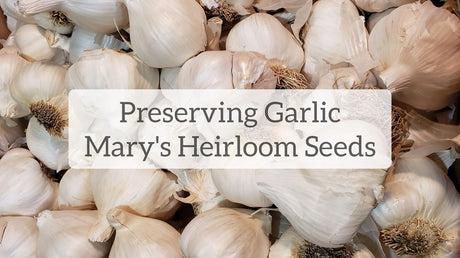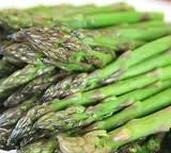
Preserving Garlic
Earlier this year during a live chat we discussed different ways to preserve garlic. It is important to mention that after you harvest garlic from your garden, it is important...
Mary Smith |
Welcome to our store Learn more

Earlier this year during a live chat we discussed different ways to preserve garlic. It is important to mention that after you harvest garlic from your garden, it is important...
Mary Smith |

Garlic is another easy crop that can be grown in just about any type of garden. It takes a little bit of planning ahead but it's pretty low maintenance. At...
Mary Smith |

Here's the latest from Mary @ Mary's Heirloom Seeds! There's still time to order Your ORGANIC GARLIC before we are all sold out! We just added 2 new varieties! Mary's...
Mary Smith |

We grow as much of our own organic food as we have the resources to produce and it still isn't 100%. What we do not grow we try to find...
Mary Smith |

We've already shared our Alfalfa Meal tea so today we're making KELP tea. This is especially important if you plan on planting Organic Garlic this year. What is KELP...
Mary Smith |

Welcome to our 3rd installment of our Growing Organic Garlic series for 2016. First we shared How to Plant Organic Garlic and then When to Plant Garlic. Growing Garlic is...
Mary Smith |

2017 If you're new to growing Garlic, you might want to read our first article How to Plant Organic Garlic. One important factor in planting garlic is PLANNING AHEAD. First,...
Mary Smith |

2017 It's that time to start thinking about GARLIC. This is our third year of offering several varieties of Garlic Seed at Mary's Heirloom Seeds. The first 2 years we...
Mary Smith |
It's that time to start thinking about GARLIC. This is our second year of offering several varieties of Organic Garlic Seed at Mary's Heirloom Seeds. Pre-Orders of Garlic is still...
Mary Smith |
Mary's Heirloom Seeds Quick Links Seed Starting SUPPLIES Organic Plant Food Organic Pest Control Heirloom BEANS Heirloom BEETS Heirloom CABBAGE Heirloom CARROTS Heirloom CORN Heirloom CUCUMBERS Heirloom EGGPLANT...
Mary Smith |